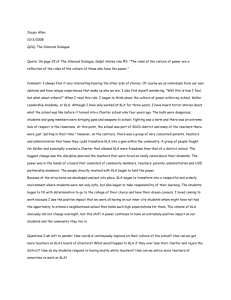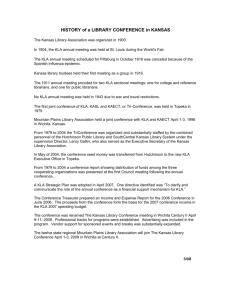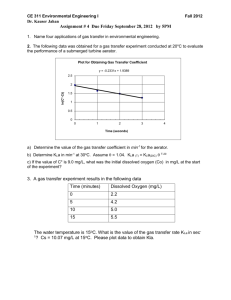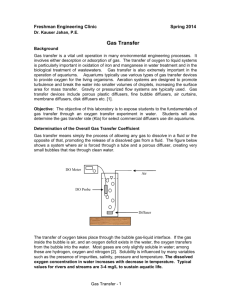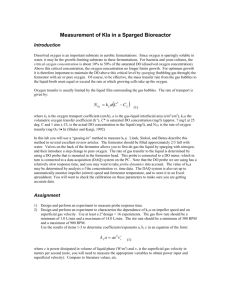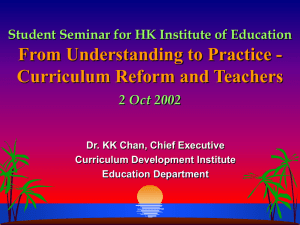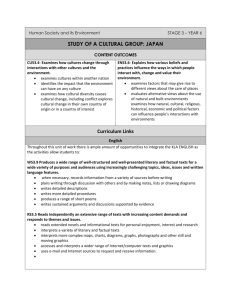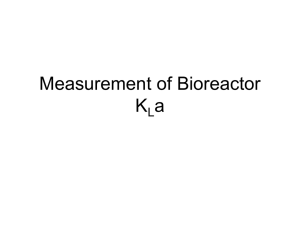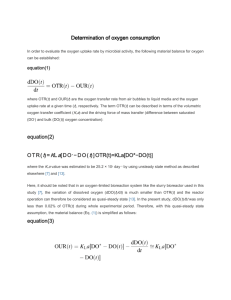Programming Guidelines Policy - Our Lady Help of Christians
advertisement
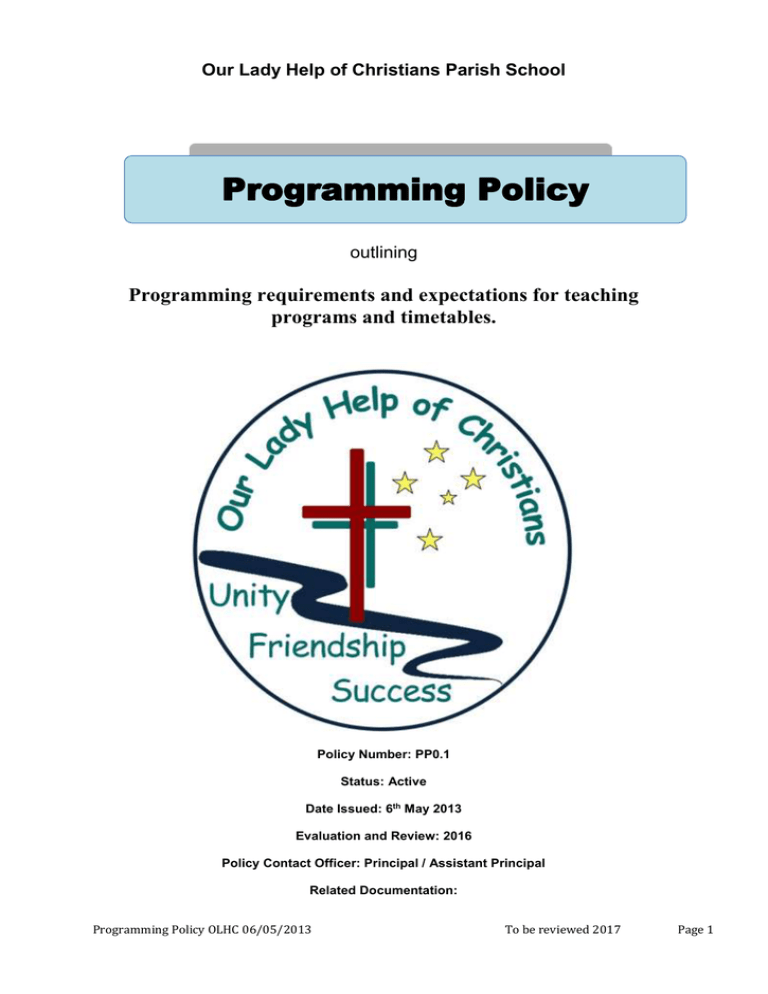
Our Lady Help of Christians Parish School Programming Policy outlining Programming requirements and expectations for teaching programs and timetables. Policy Number: PP0.1 Status: Active Date Issued: 6th May 2013 Evaluation and Review: 2016 Policy Contact Officer: Principal / Assistant Principal Related Documentation: Programming Policy OLHC 06/05/2013 To be reviewed 2017 Page 1 Purpose This policy provides a clear and concise description of the Board of Studies (BOS), Catholic Schools Office (CSO) and our school’s expectations for teaching programs and classroom timetables. Teaching and learning programs are a record of planned learning experiences and need to reflect an understanding of the needs, interests and abilities of our students. Learning sequences should be based on syllabus outcomes and provide for critical and creative thinking, exploration and experimentation. Programs should be designed in collaboration with other year/stage teachers and the students. Continual planning and reflection are key components of a flexible and negotiated curriculum. Programs should be developed and drawn from a rich curriculum that is inspiring, rigorous and that engages the contemporary learner. In planning and developing programs using the Australian Curriculum in NSW Syllabuses, teachers and schools are required to develop programming documents that support teaching and learning that deepens insight and meaning, and also meet the requirements from the Board of Studies (BOS). Digital programs are an acceptable way of presenting a teaching program. Students are individuals who learn at different rates and in different ways. Teaching programs need to show differentiations in learning content, lesson delivery and assessments that incorporate and cater to the prior learning experiences, learning styles and preferences, interests and talents of the diverse range of students in our classrooms. Differentiation is a targeted process that involves forward planning, programming and instruction. Differentiated programming provides alternate methods and choices for students to demonstrate their knowledge, understanding and skills. Differentiated programming also considers resources, stimulus materials, individualised student feedback and higher-order thinking and creative and critical thinking skills to promote flexible learning experiences that encourage students to work, at their own pace, towards their individual levels of achievement. Programming Format Checklist + Notes on Compliance for Classroom Teachers 1. Title Page Name of School Classroom Teacher/s Grade Name Year 2. School Vision and Mission Statement 3. Personal Education Philosophy Teacher’s personal teaching philosophy on teaching children in the 21 st Century. (Updated each year to match current best practice and linked with the Contemporary Learning Framework) Programming Policy OLHC 06/05/2013 To be reviewed 2017 Page 2 4. Class Profile Statement about each individual student in the class that identifies: - Student name - Gender - Date of birth - Relevant cultural and social background - Religious affiliation 5. Needs Analysis A checklist or profile on each student within your class group that has any additional needs. For example: - ESL - Draw attention to an IEP or record card -Wears glasses, hearing difficulties - Needs support/extension - Medical Alerts -Further comments 6. Classroom Organisation Classroom routines (times and activities) Class rules Behaviour management procedures An outline of the role of any additional person who supports learning in the classroom. What do they do and when? (Teacher’s aides, parent helpers etc). Duty roster 7. Timetables Class Timetable - allocated time for each KLA as specified by the BOS - KLAs correctly labelled - RFF teachers are named and times identified Support Staff Timetable - highlight the times when they are in your room 8. School Scope and Sequences and Term/Yearly Overviews Elements to include in this section: - Stage Statements - Outcomes from Syllabus (can be represented with the outcome codes) - Title and sequence of each unit for the year/stage - Duration of each learning sequence - Term and Date - Subject-specific requirements (texts etc) - Additional information based on common practice in the school 9. KLA Assessment Plans KLA Assessment Plans are overviews of all of the assessment activities included in all planned learning and teaching experiences for each term. Programming Policy OLHC 06/05/2013 To be reviewed 2017 Page 3 10. Teaching and Learning Program Include teaching and learning sequences, outcomes, register of taught outcomes (signed and dated), differentiation, assessment, resources, links to other KLAs and evaluations. Refer to the notes over the page for the requirements for each of the following KLAs: Religious Education English Mathematics Science and Technology HSIE PD/H/PE Creative Arts Key Learning Areas: Religious Education - Title page that clearly labels the KLA - Scope and Sequence for the year, including outcomes - Term Planner, include school feasts and celebrations - Unit Coversheet: Syllabus Outcomes & Indicators (from RE On-line or curriculum book) - KLA Organisation Statement: a clear outline of how this KLA or sub strands will be taught in your classroom, Literacy block components, grouping structures, lesson structures, routines, methods, cooperative learning strategies, differentiation of curriculum taught to special needs/extension students, how learning support staff are used in this KLA - Teaching and learning experiences, include an explicit and systematic sequence of experiences generated from the objectives/outcomes - Evidence of following the Emmaus Process - Evidence that Teaching/Learning activities cater for the needs of all students in your class (including appropriate reference to IEPs) - Evidence of use of RE On-line material - Evidence of Registration (date & sign) - Curriculum/ integration links where appropriate - Evidence of appropriate prayers for the unit, Liturgies & Masses (ie formal and informal including hymns and songs) Catholic Schools Office requirements in addition to the BOS requirements above: - Catholic Perspectives underpinned by the Foundation Beliefs and Practices - Connections to the Contemporary Learning Framework - Integration of the 4 Critical Questions of Learning – big ideas/guiding questions Programming Policy OLHC 06/05/2013 To be reviewed 2017 Page 4 English - Title page that clearly labels the KLA - KLA Organisation Statement: a clear outline of how this KLA or sub strands will be taught in your classroom, Literacy block components, grouping structures, lesson structures, routines, methods, cooperative learning strategies, differentiation of curriculum taught to special needs/extension students, how learning support staff are used in this KLA - Scope and sequence for teaching English including Grammar, Spelling etc for the Year/Stage. - Unit description, including syllabus outcomes, duration and stage or year group - Teaching and learning experiences including an explicit and systematic sequence of experiences generated from the objectives/outcomes and based on relevant syllabus content - All necessary resources used - All assessment activities (must be clearly identified e.g. bold/colour text, star or sticker) - Student and content differentiation - Links with other Key Learning Areas - Written evaluation Catholic Schools Office requirements in addition to the BOS requirements above: - Catholic Perspectives underpinned by the Foundation Beliefs and Practices - Connections to the Contemporary Learning Framework - Integration of the 4 Critical Questions of Learning – big ideas/guiding questions Mathematics - Title page that clearly labels the KLA - KLA Organisation Statement: a clear outline of how this KLA or sub strand will be taught in your classroom, lesson components, grouping structures, lesson structures, routines, methods, cooperative learning strategies, differentiation of curriculum taught to special needs/extension students, how learning support staff are used in this KLA - Scope and sequence for teaching Mathematics for the Year/Stage. - Unit description, including syllabus outcomes, duration and stage or year group - Teaching and learning experiences including an explicit and systematic sequence of experiences generated from the objectives/outcomes - All necessary resources used - All assessment activities (must be clearly identified e.g. bold/colour text, star or sticker) - Student and content differentiation - Links with other Key Learning Areas - Written evaluation Catholic Schools Office requirements in addition to the BOS requirements above: - Catholic Perspectives underpinned by the Foundation Beliefs and Practices - Connections to the Contemporary Learning Framework - Integration of the 4 Critical Questions of Learning – big ideas/guiding questions Programming Policy OLHC 06/05/2013 To be reviewed 2017 Page 5 Human Society & Its Environment - Title page that clearly labels the KLA - KLA Organisation Statement: a clear outline of how this KLA or sub strands will be taught in your classroom, lesson components, grouping structures, lesson structures, routines, methods, cooperative learning strategies, differentiation of curriculum taught to special needs/extension students, how learning support staff are used in this KLA - Scope and sequence for teaching HSIE for the Year/Stage. - Unit description, including syllabus outcomes, duration and stage or year group - Teaching and learning experiences including an explicit and systematic sequence of experiences generated from the objectives/outcomes - All necessary resources used - All assessment activities (must be clearly identified e.g. bold/colour text, star or sticker) - Student and content differentiation - Links with other Key Learning Areas - Written evaluation Catholic Schools Office requirements in addition to the BOS requirements above: - Catholic Perspectives underpinned by the Foundation Beliefs and Practices - Connections to the Contemporary Learning Framework - Integration of the 4 Critical Questions of Learning – big ideas/guiding questions Science & Technology - Title page that clearly labels the KLA - KLA Organisation Statement: a clear outline of how this KLA or sub strands will be taught in your classroom, lesson components, grouping structures, lesson structures, routines, methods, cooperative learning strategies, differentiation of curriculum taught to special needs/extension students, how learning support staff are used in this KLA - Scope and sequence for teaching Science and Technology for the Year/Stage. - Unit description, including syllabus outcomes, duration and stage or year group - Teaching and learning experiences including an explicit and systematic sequence of experiences generated from the objectives/outcomes - All necessary resources used - All assessment activities (must be clearly identified e.g. bold/colour text, star or sticker) - Student and content differentiation - Links with other Key Learning Areas - Written evaluation Catholic Schools Office requirements in addition to the BOS requirements above: - Catholic Perspectives underpinned by the Foundation Beliefs and Practices - Connections to the Contemporary Learning Framework - Integration of the 4 Critical Questions of Learning – big ideas/guiding questions Programming Policy OLHC 06/05/2013 To be reviewed 2017 Page 6 Personal Development, Health & Physical Education - Title page that clearly labels the KLA - KLA Organisation Statement: a clear outline of how this KLA or sub strands will be taught in your classroom, lesson components, grouping structures, lesson structures, routines, methods, cooperative learning strategies, differentiation of curriculum taught to special needs/extension students, how learning support staff are used in this KLA - Scope and sequence for teaching PDHPE or the appropriate Sub Strands for the Year/Stage. - Unit description, including syllabus outcomes, duration and stage or year group - Teaching and learning experiences including an explicit and systematic sequence of experiences generated from the objectives/outcomes - All necessary resources used - All assessment activities (must be clearly identified e.g. bold/colour text, star or sticker) - Student and content differentiation - Links with other Key Learning Areas - Written evaluation Catholic Schools Office requirements in addition to the BOS requirements above: - Catholic Perspectives underpinned by the Foundation Beliefs and Practices - Connections to the Contemporary Learning Framework - Integration of the 4 Critical Questions of Learning – big ideas/guiding questions Creative Arts - Title page that clearly labels the KLA - KLA Organisation Statement: a clear outline of how this KLA or sub strands will be taught in your classroom, lesson components for Drama, Dance, Visual Arts and Music, grouping structures, lesson structures, routines, methods, cooperative learning strategies, differentiation of curriculum taught to special needs/extension students, how learning support staff are used in this KLA - Scope and sequence for teaching each component of the CAPA syllabus - Unit description, including syllabus outcomes, duration and stage or year group - Teaching and learning experiences including an explicit and systematic sequence of experiences generated from the objectives/outcomes - All necessary resources used - All assessment activities (must be clearly identified e.g. bold/colour text, star or sticker) - Student and content differentiation - Links with other Key Learning Areas - Written evaluation Catholic Schools Office requirements in addition to the BOS requirements above: - Catholic Perspectives underpinned by the Foundation Beliefs and Practices - Connections to the Contemporary Learning Framework - Integration of the 4 Critical Questions of Learning – big ideas/guiding questions Programming Policy OLHC 06/05/2013 To be reviewed 2017 Page 7 Integrated Unit of Work - Title page that clearly labels the Unit - Integration Organisational Statement: a clear explanation of the KLAs that are being integrated, teaching strategies grouping structures, lesson structures, routines, methods, cooperative learning strategies, differentiation of curriculum taught to special needs/extension students, how learning support staff are used in this KLA - Scope and sequence for teaching PDHPE or the appropriate Sub Strands for the Year/Stage. - Unit description, including syllabus outcomes, duration and stage or year group - Teaching and learning experiences including an explicit and systematic sequence of experiences generated from the objectives/outcomes - All necessary resources used - All assessment activities (must be clearly identified e.g. bold/colour text, star or sticker) - Student and content differentiation - Written evaluation Catholic Schools Office requirements in addition to the BOS requirements above: - Catholic Perspectives underpinned by the Foundation Beliefs and Practices - Connections to the Contemporary Learning Framework - Integration of the 4 Critical Questions of Learning – big ideas/guiding questions Programming Policy OLHC 06/05/2013 To be reviewed 2017 Page 8 Classroom Timetable Requirements - Board of Studies NSW Syllabuses will indicate the number of hours of study that students would typically need to achieve the standards described in the syllabus. - Classroom timetables need to be consistent with the indicative KLA time allocations - The time allocation required for compliance with both BOS and CSO regulations is as follows: English/Mathematics 45%-55% Religion 10% (2.5 hours) Other KLA’s 25%-35% OR: Religious Education 10% English 25%-35& Mathematics 20% Science and Technology 6%-10% HSIE 6%-10% PDHPE 6%-10% Creative and Practical Arts 6%-10% - Timetables must have KLA times indicated so that percentages can be easily calculated - All KLA’s must be indicated by title and not simply broken down into strands. E.g. ‘ENGLISH’ must be used to indicate time spent on outcomes from the English Syllabus not just reading/writing/spelling. These sub-titles or strands can be added to the time table underneath the KLA title. - All teachers on the class are to be recorded on the timetable for that class, including RFF teachers. The teacher’s name, time spent in the room and the KLA taught are to be recorded on the timetable. Programming Policy OLHC 06/05/2013 To be reviewed 2017 Page 9 Appendix 1- Programming Note for Compliance Programming Policy OLHC 06/05/2013 To be reviewed 2017 Page 10 Appendix 2 – Sample Timetable Mrs Smith – Year 1S Term One Timetable – 2014 Monday Tuesday Wednesday Admin Admin Admin English -Phonics Religious Education Religious Education English – Talking & Listening 10.00 Mathematics (80mins Mrs McDonald) 11.00 8.55 9.00 9.10 Thursday Admin Physical Education Religious Education Friday Admin Physical Education Religious Education Mathematics - Statistics & Probability English – Modelled & Shared Reading -Modelled & Shared writing English -Guided reading activities -Independent Writing tasks English -Guided reading activities -Independent Writing tasks LUNCH LUNCH LUNCH LUNCH LUNCH Mathematics (60mins Mrs McDonald) Personal Development, Health & Physical Education (40mins Mrs Brown) English -Spelling -Handwriting English -Spelling -Talking & Listening Human Society & its Environment 9.40 11.40 12:20 Creative Arts (40mins Mr Castle) 12.45 1:00 1.15 1.45 2.05 2.35 3.05 English (Mrs McDonald) RECESS Religious Education Personal Development & Health DISMISSAL English – Library (40mins Mrs McDonald) Mathematics -Number & Algebra Mathematics -Number & Algebra Human Society & its Environment Science & Technology RECESS RECESS Science & Technology Science & Technology Personal Development, Health & Physical Education SPORT (DANCE) DISMISSAL DISMISSAL Programming Policy OLHC 06/05/2013 RECESS Creative Arts RECESS Assembly Vertical Groups DISMISSAL DISMISSAL To be reviewed 2017 Page 11 Key Learning Area Religious Education English Mathematics Science & Technology Human Society & its Environment Creative Arts PD/H/PE – Personal Development & Health PD/H/PE – Physical Education Additional Activities ~ Assemblies etc. TOTAL Minimum Teaching Hours Required for Compliance 2 hrs 30 mins 6 hrs 15 mins 5 hrs 1 hr 30 mins 1 hr 30 mins 1 hr 30 mins 1 hr 30 mins 2 hrs 2 hrs 30 mins (maximum) Programming Policy OLHC 06/05/2013 To be reviewed 2017 Page 12
